Ballyboy
Houses within 15km of this house
Displaying 64 houses.
Houses within 15km of Ballyboy
Displaying 64 houses.
| House name | Description | |
|---|---|---|
| Loughananna | At the time of Griffith's Valuation a house at Loughananna was occupied by James McGrath, valued at £10+ and situated on the Kingston estate. By 1906 the mansion house at Loughananna was valued at £50+ and Abel Buckley is recorded as the occupier. | |
| Knocklofty | A mainly 18th century house, cited by Wilson as the seat of John Hely Hutchinson in 1786. In 1840 the Ordnance Survey Name Books describe it as "spacious and handsome, having a fine plain front". It was valued at £70 in the mid 19th century, the seat of the Earls of Donoughmore until 1983, though Walford mentions Samuel H. Goold-Adams of Knocklofty in 1885. The Irish Tourist Association surveyor writes that Knocklofty was De Valera's headquarters for a time during the Civil War. Until recently it served as a hotel but in 2013 it was offered for sale. |

|
| Araglin Cottage | Located on the bank of the Araglin River and built for Robert Viscount Kingsborough, later 4th Earl of Kingston, this was probably the summer residence recently erected by the Honourable Robert King in the parish of Templemologga, referred to by Lewis in 1837. It was offered for sale in July 1851 with 3,951 acres held by the Earl in the barony of Condons and Clangibbon. Sold to the Morlands who leased it as a fishing lodge, this house is now a family home. In the 1870s John Sherlock of Aroglin Cottage, Kilworth, was recorded as the owner of 183 acres in county Cork. |

|
| Kilgrogy House | A Clutterbuck home, occupied by Thomas Clutterbuck in 1814. The Ordnance Survey Name Books refer to it as the residence of Samuel Clutterbuck in 1839 and mention that it was in bad repair. Lewis refers to it as the seat of L. Clutterbuck in 1837 and Samuel Clutterbuck was the occupier in the early 1850s. He held the property from Viscount Lismore. The buildings were valued at £14. A building is still located at this site. | |
| Tubbrid | Laurence Walsh occupied a house valued at £11.10 shillings and held from Lord Waterpark in the mid 19th century. This house still functions as a farm house. |

|
| Monroe House | Charles Browne was occupying this house in the early 1850s. He held it from the Earl of Glengall and the buildings were valued at £10. A house and farm are still extant at the site. | |
| Caher Park | Bence Jones writes that this house was built by Lady Margaret Charteris in the early 1860s to the design of Lanyon, Lynn and Lanyon. Valued at £45 in 1906, the house burnt down in the 1960s after being sold following the death of Lieutenant Colonel R.B. Charteris in 1961. Also known as Cahir Lodge. |
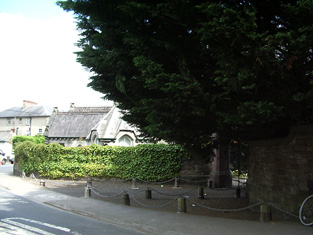
|
| Caher House | A house lived in by the Butler family when they ceased to use Caher Castle as a residence. Wilson mentions the seat of Lord Caher in the town. Located in the town square of Caher it now functions as a hotel. Leet records Lord Cahir as resident at Cahir Castle in 1814 but by 1837 Lewis writes that Cahir House was the seat of the Earl of Glengall. He held this house in fee at the time of Griffith's Valuation when it was valued at £100. |

|
| Mill View | This house was the home of the Sargent family in the 19th century, inhabited by Henry Sargent in 1814 and at the time of Griffith's Valuation. It was held from the Earl of Glengall and valued at £30 in the early 1850s. This house is no longer extant. | |
| Garnavilla | A branch of the Nagle family lived at Garnavilla in the 18th century. They held it on a lease from Lord Caher. James Archer Butler was the occupant of this house in 1837 and in the early 1850s when the house was valued at £21 and held from the Earl of Glengall. A building is still extant at this location. | |
| Ballybrada | The residence of Joseph William Fennell in 1814 and 1837. In 1840 the Ordnance Survey Name Books describe "Ballybrado House" as "old and plain, the residence of William Pnnyfeather". Thomas Fennell held the house and offices and 206 acres including a Quakers' graveyard from William Pennefather at the time of Griffith's Valuation. The buildings were valued at £21. The original house as marked on the first Ordnance Survey map is not extant now. The National Inventory of Architectural Heritage website features Ballybrada House built 1879, possibly by the Denny family. Charles E. Denny was resident in 1906 when the buildings were valued at £141+. |
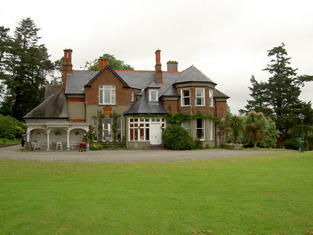
|
| Cottage (Caher) | The residence of George Fennell from 1814 until at least the mid 19th century, when it was valued at £22+ and held from Mrs Rachel Haughton. A building is still located at this site. | |
| Caherabbey House | Occupied by John Fennell in 1814 and by Richard Grubb in 1837. Montgomery records that Richard Grubb built a house at Cahirabbey circa 1833. Richard Grubb held the property in fee at the time of Griffith's Valuation when the buildings were valued at £70. He also had a flour mill closeby valued at £200. In 1894 Slater notes it as the seat of Rev. George Grubb. This house continues to be a family home. In 2013 it was offered for sale. |
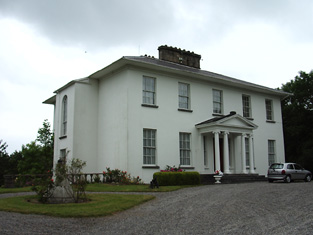
|
| Caherabbey House Upper | Joshua Fennell occupied a house known as Caher-abbey-villa in 1814 and in the early 1850s Joshua Fennell (Joseph) was occupying a house in Caherabbey Upper, valued at £29 and held from Ponsonby Barker. | |
| Alta Villa | The home of a branch of the Going family for much of the 19th century. Charles Going was resident in 1814, William Going in 1837. The Ordnance Survey Name Books describe it as "of modern structure in good repair" in 1840. William Going was also the occupier at the time of Griffith's Valuation when the house was valued at £22+ and his flour mill at £66. The property was held from the representatives of Dunbar Barton. Alexander Going of Alta Villa owned 313 acres in county Tipperary in the 1870s. Sir T. Warren lived at Alta Villa, Cahir in the mid 20th century. Alta Villa is still extant and occupied. |
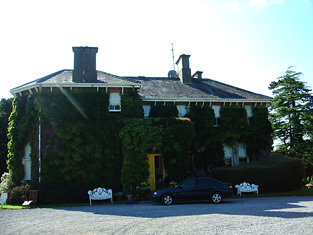
|
| Rochestown | Rochestown came into the possession of the Barton family through the marriage in 1798 of Dunbar Barton and Elizabeth Riall. In 1837 Lewis describes Rochestown as the seat [of their son] S. Barton. Samuel Barton was resident in the early 1850s holding the house valued at £37 from a member of the Beamish family. The National Inventory of Architectural Heritage records the remodelling of the house in 1867 by the Wise family, the design by Sir Thomas Newman Deane. The house was valued at £55 in 1906 and occupied by Francis H. Wise. Damaged by fire in 1918 and completely destroyed by fire in February 1923. |

|
| Keylong | In 1786 Wilson refers to this house as the seat of Mr. Butler. Key-long was the residence of Richard Butler in 1814 and in the early 1850s Richard Carew was the occupier, holding the house valued at £12 from Thomas Going. This house is still a family residence. |
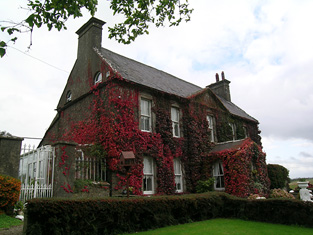
|
| Swiss Cottage | A thatched house built in a wooded area early in the 19th century and "probably designed by John Nash" (Bence Jones p.53). In the mid 19th century it was valued at £9 and held by the Earl of Glengall in fee. A lithograph of this building is included in the Glengall sale rental of November 1853 and the Burmester, Law and Sadlier sale rental of November 1857. Now in use as a heritage centre. |
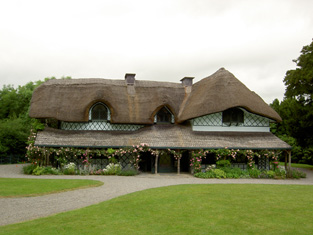
|
| Killemly Lodge | In 1837 the proprietor of Killemly Hall was H. Hughes but it was occupied by L. Clutterbuck. The Ordnance Survey Name Books also note it as his residence in 1840. The house was vacant in the early 1850s, valued at £9.15 shillings and held by Thomas Going from Mrs Catherine Sarsfield. There was a small corn mill nearby. A house is still extant at this location. | |
| Loughlohery | In 1786 Wilson refers to "Loughlokery" as the seat of Mr. Dogherty. The residence of William Quin from at least 1814 and held by him in fee in the early 1850s when the house was valued at £33. The Quinns were still resident at Loughloher in the 1870s. A house is still extant at the site. | |
| Corrabella | In 1840 the Ordnance Survey Name Books describe this house as "a very good building in bad repair, the residence of Miss Ann Mulcahy". It was leased to William Mulcahy by the Glengall estate and occupied by him in the mid 19th century when it was valued at £18+. A lithograph of this building is included in the sale rental of November 1853. The Mulcahys were still resident in the 1950s. This three storey house still functions as a residence. |
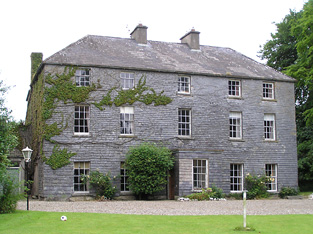
|
| Greenmount (Molough) | Originally the home of a branch of the Greene family of Kilmanahan. Occupied by Robert Prendergast in 1814. In 1841 the Ordnance Survey Name Books refer to it as the residence of Richard Butler Hamilton Low. It was leased by Southwell Mulcahy at the time of Griffith's Valuation, when the house was valued at £24 and held from the Reverend William Pennefather. Marked on the first Ordnance Survey map as Greenmount, this house is now known as Kenilworth House. |
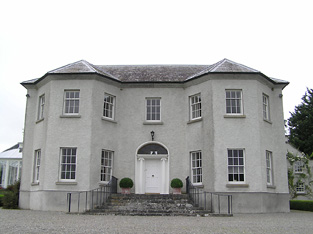
|
| Burgesland House | In 1841 the Ordnance Survey Name Books refer to Burgesland House as "a gentleman's place, the residence of Thomas Mulcahy". The house was valued at £16+ in the mid 19th century. It was occupied by Thomas Mulcahy and held from Edward Pennefather. Some ruined buildings are extant at the site. | |
| Lacken | In 1840 the Ordnance Survey Name Books noted Lacken as the residence of "Pendergrass", a house in very good repair. John Mulcahy occupied the house valued at £15+ at Lacken in the mid 19th century. He held the property from William Ryan. This house is no longer lived in. |

|
| Pastor Ville | By the early 1850s the Reverend Edward Larkin was resident at Pastor Ville, valued at £16+ and held from the Earl of Clonmel. The house is labelled Pastorville House on the 1st edition Ordnance Survey map but as Boolahallagh House on the later 25-inch edition of the 1890s. It is now in ruins. | |
| Neddans | In 1840 the Ordnance Survey Name Books note "Neddins" as the residence of Mr. Mulcahy, "a very neat house in excellent repair". At the time of Griffith's Valuation Francis Mulcahy occupied a house at Neddans valued at £21 and held from the Earl of Glengall. A farming enterprise is still located at this site. | |
| Castlegrace | This property has been the home of the Grubb family since the mid 19th century. Griffith's Valuation indicates that it was then held from the Earl of Glengall and the house, offices and flour mill were valued at £122. The National Inventory of Architectural Heritage dates the present house circa 1860 although a lithograph of a very similar building is included in the Glengall sale rental of November 1853 for Castlegrace. Lewis records in 1837 that an extensive flour mill had recently been built by Samuel Grubb of Clogheen. The buildings at Castlegrace were valued at £115 in 1906. This house is still a Grubb family home. http://www.vee.ie/page2.html |

|
| Shanbally Castle | Bence Jones writes that this was the largest of John Nash's Irish castles, built circa 1812 for Cornelius O'Callaghan 1st Viscount Lismore. It was valued at £151 in the mid 19th century. Inherited by two daughters of the Marquess of Ormonde Lady Beatrice Pole Carew and Lady Constance Butler following the death of their cousin the 2nd and last Viscount Lismore in 1898. The Irish Tourist Association Survey in the early 1940s records that the building was taken over by the military authorities "for the duration of the present emergency". Sold by Major Patrick Pole Carew in 1954 and demolished in 1957. |

|
| Shanbally | In 1786 Wilson refers to Shanbally as a seat of Viscount Lismore. It was occupied by John Mahoney and valued at £10.15 shillings at the time of Griffith's Valuation, held from Viscount Lismore. In 1894 Slater refers to it as a residence of Viscount Lismore. | |
| Rehill | Rehill was occupied by William Fennell in 1814 and 1837 but by the time of Griffith's Valuation James Mulcahy was resident, holding the property from the Earl of Glengall. The buildings which included a house, offices and corn mill were valued at £62. Sold in 1853 to Robert Murdock and leased by him to Edward Mulcahy. A building is still located as this site. | |
| Carrigataha | The home of W.J. Fennel in 1837 and in 1840. The Ordnance Survey Name Books describe it as "very pleasantly situated and in good repair". It was occupied by Thomas Fennell in the early 1850s. Thomas held the property from a member of the McCarthy family and the buildings were valued at £15. Buildings are still located at this site. | |
| Garryroan House | Robert Fennell occupied this house in 1814 and Joseph R. Fennell at the time of Griffith's Valuation, when the buildings were valued at £14 and held from Lord Waterpark. This was still a Fennell home in the 1870s and continues to be a family residence. In 2012 it was offered for sale. |

|
| Ballywilliam | Joshua Sutton lived at Ballywilliam in 1814. In 1851 the estate of William Parry Sutton, a minor, was offered for sale in the Encumbered Estates Court. It included interest in the lands of Shanrahan. The purchasers included Messers. Carroll, Greaves and Mooney, in trust. At the time of Griffith's Valuation, James King was resident, when the buildings were valued at £9.10 shillings and held from the Irish Land Company. |

|
| Galtee Castle | Built in the late 18th century as a hunting lodge, it was described in the Kingston sale rental of July 1851 as a "handsome cut stone building, erected in a tasteful style of architecture, with suitable offices .... beautifully situated in the curve of a well planted glen..". Located close to the eastern bank of the Attychraan River at the base of the southern slope of the Galty Mountains, this house was occupied by James Law in the mid 19th century, valued at £29+ and held by him in fee. Noted by Slater in 1894 as the home of Nathaniel Buckley and of Abel Buckley in 1906 when the buildings were valued at £130. The house is no longer extant. Also known as Mountain Lodge. | |
| Scart | The residence of Robert Croker in 1814 and of Henry Rice in 1837. The Ordnance Survey Name Books refer to it as his residence in 1840, "pleasantly situated on rising ground and in good repair". In the early 1850s Rice held the property from John Bagwell and the buildings were valued at £12+. Henry Rice may have been a son-in-law of Robert Croker. see http://members.iinet.net.au/~nickred/croker_research/The_Irish_CROKER.pdf A building is still located at this site. | |
| Millgrove House | Thomas Jackson occupied this house in 1814 and William Walpole in the 1850s. Walpole held the property from Lord Waterpark and the house, office and corn mill were valued at £38. This house has recently been renovated. |
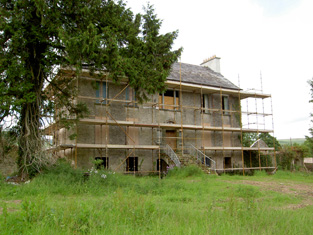
|
| Tincurry House | Abraham Jackson was residing at Tincurry in 1814. The Ordnance Survey Name Books refer to Tincurry as the residence of Stephen Moore in 1840. The building appears to have been in use as a workhouse at the time of Griffith's Valuation. In 1906 Wiliam Jackson Pigott was resident at Tincurry in a house valued at £23+. The National Inventory of Architectural Heritage states that the present house was built in 1932 on the same site as the original house which was blown up by British Forces in 1921. |

|
| Coole | A house with a gatelodge marked on the first Ordnance Survey map and located just north of Knocklofty. Occupied by Thomas Morrissey in the mid 19th century, held from the Earl of Donoughmore and valued at £16+. A building is still extant at this location. | |
| Marlfield | Built by Colonel John Bagwell MP in the late 18th century in the Palladian style. It was the seat of the Bagwell family of Clonmel in the 19th and 20th centuries, held from the Moores of Barne and valued at almost £83 in the early 1850s. The central part of the house was burnt in 1923 and rebuilt in 1925 and is now in use as an apartment complex. |

|
| New Abbey | In 1786 Wilson refers to New-Abbey as the seat of Moore Cootee. He notes that the house was close to "the great flour mills built by the late Stephen Moore". New-Abbey was occupied by Henry Moore in the mid 19th century and held from Stephen Moore, the buildings were valued at £11.16 shillings. | |
| Woodrooff | The seat of the Perry family in the 18th and 19th centuries, Samuel Perry was resident in 1814 and William Perry in 1837 and at the time of Griffith's Valuation, when the buildings were valued at £66+. Samuel Perry was resident in 1906. Bence Jones writes that this house is now mostly demolished. | |
| Ballysaggartmore House | Held in fee by Arthur Ussher at the time of Griffith's Valuation, when it was valued at £68. Lewis refers to it as the seat of A Keily in 1837 when he describes the demesne as "ample and tastefully planned". Local sources suggest Arthur Keily-Ussher commenced building a lavish castle in 1850. The extravagent entrance depleted his funds and the castle was never completed. It was later purchased by the Woodruffe family. In 1906 it was the property of Richard Woodroffe and valued at £68. The house was burned in 1922 and demolished in the 1930s. The elaborate towers are still extant and part of the demesne is a Forestry Service amenity area. |
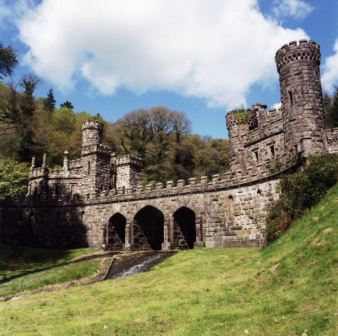
|
| Deerpark (Lismore) | Arthur Ussher held in fee a farmhouse and farmyard at Deerpark, valued at £16 10s, in 1851. Extensive farm buildings still exist at the site. | |
| Ardfinnan Castle | A building that has been added too and altered since the 15th century. Occupied by James Prendergast at the the time of Griffith's Valuation, held from the Ecclesiastical Commissioners and valued at £13. In 1894 Slater notes it as a residence of Mrs. Prendergast. Still in use as a residence. |

|
| Rath House | In 1851 John Carroll was leasing this property from the Devonshire estate when it was valued at £16. Labelled as Rath House on the later 25-inch Ordnance Survey Map. | |
| Kilnamack | In 1849, the representatives of John Greene were leasing this property to Edward Butler when it was valued at £12 11s. Both Wilson and Taylor and Skinner had also recorded it as a residence of the Greene family in the 1780s. It is still extant and in 2013 was offered for sale. |
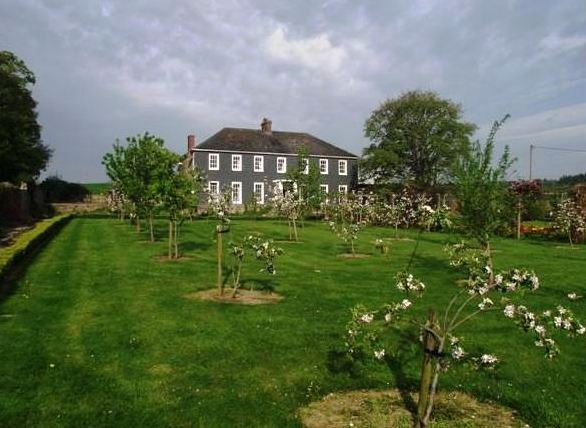
|
| Ballydrehid | In 1786 Wilson refers to Ballydrehid as a seat of Viscount Lismore, "pleasantly situated on rising ground". The home of Robert Keating in 1814 and of Robert Doherty in the early 1850s. Doherty held the property from Viscount Lismore and the house was valued at £17. This house is still extant and occupied. |

|
| Ardpaddin | Mary Mulcahy was leasing this property from the Earl of Stradbroke's estate in 1850, when it was valued at £10. A substantial farm is still extant at the site. | |
| Toureen | The first edition Ordnance Survey map marks Toureen House, later maps show a house located a short distance to the south west. Leet and Lewis records Denis O'Meagher as resident at Toureen. This may be the dairy house and offices recorded in Griffith's Valuation and valued at £3.5 shillings held by Stephen O'Meagher in fee. The 25-inch map of the 1890s indicates Tooreen House and a house and substantial farm are still extant at this site. | |
| Ballymakee House | Edward Mulcahy was leasing this property from the Stradbroke estate at the time of Griffith's Valuation, when it was valued at £26. A substantial house overlooking the river Suir, it is still extant. | |
| Whitesfort | At the time of Griffith's Valuation John Norris was leasing this property from the Stradbroke estate when it was valued at £11. Referring to the 1770s Sadleir notes "John White, of Whitefort" who was married to a daughter of Ambrose Lane. It is not named on the 1st edition Ordnance survey map though buildings and a walled garden are visible. The ruins of some buildings remain. | |
| Suir Mount | The representatives of James Fitzpatrick were leasing this property to John Egan in 1850 when it was valued at £13 11s. The house was included in the sale of the estate in May 1850 when it was described as " a good substantial dwelling house". | |
| Ballydonagh House | Described as a steward's house at the time of Griffith's Valuation, when it was held in fee by Maria Fitzpatrick and valued at £13 9s. Labelled Ballydonagh House on the 25-inch edition of the Ordnance Survey in the 1890s. | |
| Glasha | Phillip Lowe was leasing this property from Viscount Midleton's estate in 1850 when it was valued at almost £12. In 1783 it was noted by Taylor and Skinner as a residence of the Power family. | |
| Kilmanahan Castle | Robert Sparrow was leasing this property from the Greene estate in 1850 when it was valued at over £72. It was offered for sale as part of William Greene's estate in July and December 1852. The sale notice includes a lithograph of the castle. It was bought by Alexander Glasgow who sold it on to the Earl of Donoughmore in 1855. Earlier, in 1786, Wilson notes it as the seat of Mr. Greene. In 1837, Lewis refers to it as the seat of Lt. Col. Nuttall Greene. Hussey records Thomas Wright Watson of Kilmanahan Castle in the mid 1870s. In 1906 it was part of th Donoughmore estate and valued at £45. It is still extant. |
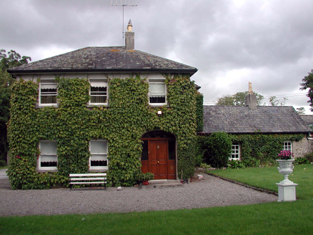
|
| Toureen Wood House | This house located on the northern fringe of Toureen wood was the home of Philip Maguire in the second half of the 19th century. The site of this house is located near a building marked on the first edition Ordnance Survey map as Maguire's Castle. The sale rental of 1875 refers to a new and comfortable dwelling house on the lands of Toureen, containing 2 good reception rooms, 7 bedrooms. a large kitchen and store room, dairy and pantries. The house was in the owner's possession. A house in the townland of Toureen valued at £7.5 shillings was held in fee by Philip Maguire in the mid 19th century. Lewis records a house known as Kilmoylermore, the residence of "the late Constantine Maguire, Esq." | |
| Clashleigh | Lewis records Claishleigh as the residence of S. Grubb and in Griffith's Valuation Samuel Grubb held a house, office and flour mill valued at £170 in Clogheen Market from Viscount Lismore. His son Henry Samuel Grubb lived at Claishleigh in the 1870s. This house was in use as a rectory in the 20th century. |

|
| Coolville | An early 19th century house, occupied by Richard Grubb in the first half of that century. It was held from Viscount Lismore and with offices and flour mills was valued at £169 in the early 1850s. Home of Edward Sackville West 5th Lord Sackville in the mid 20th century, who added a Gothic conservatory to the building. |

|
| Kilcoran Lodge | A house built in the second half of the 19th century, valued at £46.10 shillings in 1906, the property of Robert Murdock. | |
| Newcastle | Lewis writes that the only seat in the parish was the residence of S. Mulcahy. The Ordnance Survey Name Books, in 1840, mention that Newcastle House was then "in very bad repair". In the mid 19th century Miss Anne Mulcahy held the house valued at £12 from John Gordon, medical doctor, who held from the Perrys. In the 1870s William Perry is described as "of Newcastle". Elizabeth Perry occupied this house valued at £22+ in 1906. It is no longer extant. | |
| Mountain Lodge | In the mid 19th century Viscount Lismore owned a house/hunting lodge valued at £7 in the townland of Cullenagh (2,740 acres) which he also owned. This building has since been extended and is still in use as a youth hostel. |

|
| Cuckoo Hill | In 1786 Wilson referred to a house he called "Clover-Hill", three miles from Caher, "the seat of Mr. Ryall". He may have been referring to the townland named Cuckoohill which appears on the 1st edition Ordnance Map. A house is present in this townland which is labelled Cuckoo Hill House on the 25-inch Ordnance Survey map of the 1890s. At the time of Griffith's Valuation, this property was leased to Patrick Heffernan by Abraham Riall when it was valued at over £6. A house and farm still occupy the site. | |
| Rosemount (Caher) | In 1840 the Ordnance Survey Name Books refer to Rosemount as a house in good repair, the residence of Robert Franklin. He is also listed as the occupier at the time of Griffith's Valuation, leasing from the Barton estate when the buildings had a valuation of £10. Robert Franklin of Rosemount is listed in Slater's Directory of 1846. The house is no longer extant. | |
| Lissava House | In 1840 the Ordnance Survey Name Books refer to Lissava House as the residence of John Egan. He was recorded among the gentry of Caher in Slater's Directory 1846. He also the occupier in the early 1850s when he was leasing it from the Earl of Glengall's estate. The buildings were valued at £12. A house is still extant at the site. |

